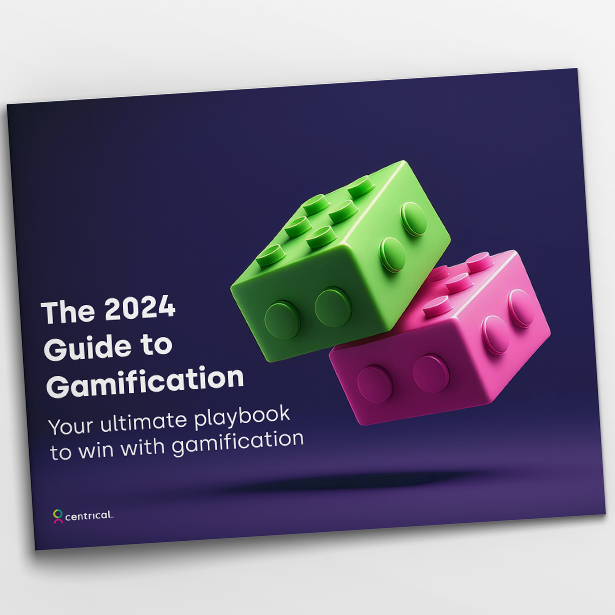While traditionally seen as a cost center, contact centers are increasingly being viewed as revenue multipliers – both in terms of short-term opportunities and long-term customer retention and relationships.
Either way, there is always scope for improving the efficiency of your cost center and ensuring that your investment in this area results in a major return.
We’ll look at contact center efficiency, including common inefficiencies and 10 leading strategies to improve contact center efficiency.
What is Contact Center Efficiency?
Contact center efficiency refers to how effectively a call or customer service center handles customer interactions with minimal waste of resources. It involves managing and improving various factors such as the speed of answering calls, the quality of customer service provided, and the use of technology to streamline operations. An efficient contact center not only resolves customer issues quickly but also ensures high customer satisfaction and lower operating costs. The goal is to maximize productivity and effectiveness in handling inquiries and support requests.
How is Contact Center Efficiency Measured?
Contact center efficiency is measured using specific metrics that evaluate how well the center manages customer interactions. Key metrics include:
- Average handle time (AHT): the total average duration of a single interaction, including talk time and related tasks.
- First call resolution (FCR): the percentage of calls resolved without needing a follow-up.
- Customer satisfaction (CSAT): a score that reflects how satisfied customers are with their interaction.
- Occupancy rate: the percentage of time agents spend handling calls versus waiting for calls.
- Service level: the percentage of calls answered within a specific timeframe.
These metrics help managers understand the effectiveness of their operations and pinpoint areas for improvement.
Common Inefficiencies in Contact Centers
To optimize contact center efficiency, it’s essential first to identify the inefficiencies that contact centers face. Below are some common challenges to contact center efficiency:
- High average handle time: This occurs when calls take longer than necessary, often due to unprepared agents or complex procedures, leading to increased wait times and costs.
- Low first call resolution rates: If agents frequently require multiple calls to resolve a customer’s issue, it indicates inefficiencies in training or information access, negatively impacting customer satisfaction.
- Inadequate training: Insufficient training can prevent agents from effectively resolving issues, leading to longer handle times and decreased customer satisfaction.
- Lack of performance incentives: Without incentives to perform better, agents might lack motivation, resulting in poorer service quality and lower overall center efficiency.
- Poorly defined processes: A lack of clear and streamlined processes can lead to confusion among agents, inconsistencies in customer service, and increased error rates.
- Disengagement: When contact center agents don’t feel motivated or engaged in their work, inefficiencies can start and continue to fester.
- Outdated technology: Using outdated systems can slow down call handling, limit communication channels, and reduce the overall effectiveness of customer service.

9 Improvement Strategies for Contact Center Efficiency
These strategies are proven to boost contact center efficiency and beat any inefficiencies that might be creeping into your processes:
1. Get Gamified
Gamification brings game mechanics (e.g., leaderboards, points, levels, badges, etc.) into non-game contexts, such as a contact center workflow, to improve engagement and performance.
Gamification offers significant benefits: 89% of employees say they would be more productive if work were more game-like, and 72% think that gamification motivates them to work harder.
One example of gamification in action: a contact center could introduce a point-based system where agents earn points for achieving targets like low handle times and high customer satisfaction scores, which could be exchanged for real-life rewards.
2. Offer a consistent and inclusive employee experience
Whether your organization has an in-office, remote, or hybrid work model, ensuring your employees have a consistent experience is key to an efficient workflow. When agents have the same opportunities for learning and development and managers are consistent across teams, the overall organization flow is much more efficient, leading to improved employee and customer experiences.
3. Integrate cross-training programs
Cross-training agents across different products and services can lead to more flexible agents and quicker issue resolution.
In one example of this, a multi-service cable and internet provider implemented a cross-training strategy that enabled agents to handle both billing and technical support, which improved first call resolution rates and reduced the need for transfers.
4. Encourage a culture of continuous feedback
Encouraging a culture where agents receive regular feedback and are involved in continuous improvement processes can enhance efficiency and adaptability.
5. Develop a strategic approach to customer interaction
Formulating a strategic approach involves analyzing customer interaction data to identify trends and creating targeted strategies to improve service.
Consider the following steps:
- Segment customers based on their interaction history and preferences to offer more personalized service.
- Analyze call data to identify common issues and develop specialized scripts or procedures to address these efficiently.
- Establish clear objectives for different customer segments, such as increasing satisfaction for high-value customers or streamlining support for common queries.
- Integrate customer feedback into strategic planning to continuously refine and improve interaction strategies.
- Train agents on the strategic importance of their roles and how their interactions align with broader business goals.
6. Provide real-time coaching
Implementing real-time coaching tools that provide agents with instant feedback can significantly enhance performance by correcting issues as they occur.
This can be seen in the example of a technology company that integrated a real-time monitoring system that alerts supervisors when a call is going off-script or when an agent struggles. This allows immediate intervention to guide the agent back on track, thus improving the overall quality of interactions.
7. Establish a knowledge management system
A centralized knowledge management system provides agents immediate access to necessary and accurate information about products and protocols, leading to reduced handle times, improved response accuracy, and quicker resolutions.
8. Harness data analytics for strategic contact center efficiency insights
Leveraging data analytics to gain insights into customer behavior and preferences can help contact centers anticipate needs and optimize their interactions accordingly.
9. Leverage AI
Bringing artificial intelligence (AI) into the frontline workflow can boost contact center efficiency in many areas. For instance, incorporating AI-powered microlearning can optimize training and development processes. AI can detect knowledge and skill gaps and deliver relevant learning modules. Additionally, generative AI can make learning content creation much more efficient and scalable, reducing delays.

Meet Centrical, the #1 Gamification Platform for Boosting Team Performance
Centrical is the world’s leading gamification-based performance experience platform organizations use to significantly boost team performance and enhance contact center efficiency. The platform helps organizations achieve this by leveraging the following unique elements:
Gamification
Gamification is a proven strategy to increase frontline engagement and performance. Centrical leverages this by using gamified KPIs, game narratives, and daily opportunities for agents to earn points and rewards. This creates a motivating and engaging work environment, reducing call handle times and increasing resolution rates, as agents are incentivized to perform better and more efficiently.
Personalized Microlearning and Continuous Coaching
Centrical offers guided performance improvement and actionable coaching based on performance data so agents can rapidly improve their skills, thus accelerating new hires’ time to proficiency. This directly contributes to quicker, more effective customer interactions and reduced call flow errors. Additionally, giving managers the right tools to cut down on admin tasks and coaching preparation makes coaching sessions more efficient and meaningful – a huge step towards overall contact center efficiency.
Strategic Approach and Feedback Integration
Using data to guide performance improvements and align individual goals with company objectives supports the strategic approach to customer interactions. By focusing on individual performance and overall strategic objectives, Centrical helps agents know their roles and requirements and are equipped to execute them effectively.
Recognition and Culture Transformation
Centrical’s full suite of recognition tools and its focus on cultural transformation through social recognition and clear growth paths enhance engagement and boost retention rates. Recognizing and rewarding agents for their achievements leads to a more satisfied and motivated workforce, which is essential for maintaining high customer service and operational efficiency.
Advanced Gamification and Engagement Tools
Centrical’s advanced gamification features and engagement tools create focus and accountability, driving the right behaviors among agents. Dynamic leaderboards, group competitions, social knowledge sharing, and redeemable rewards enhance team performance and encourage a culture of continuous improvement and excellence.
By implementing these features, contact centers can anticipate significant improvements in efficiency, customer satisfaction, and overall agent performance.
Summary
We’ve just reviewed some basics around contact center efficiency, diving into factors blocking processes and how contact centers can counter these challenges. By driving contact center efficiency, organizations can meet their goals and achieve their objectives much faster and with less resource investment required.
Some key takeaways:
- Common challenges to contact center efficiency include inadequate training, disengaged employees, poorly defined processes, and outdated technology.
- Incorporating elements such as gamification, cross-training programs, continuous feedback, augmented coaching, and AI can greatly increase efficiency in contact centers.
- Gamification is a proven strategy for engaging and motivating frontline employees, including contact center agents, and driving desired behaviors over the long term.
For over a decade, Centrical has partnered with leading organizations across industries and around the world to boost contact center efficiency with its gamified platform. Watch the platform in action with a sneak preview, or request your personalized demo today.
Engage and motivate your frontline teams
Improve performance with an AI-powered digital coach
Deliver world class CX with dynamic, actionable quality evaluations
Boost performance with personalized, actionable goals
Nurture employee success with the power of AI
Listen and respond to your frontline, continuously
Drive productivity with performance-driven learning that sticks
Drive agent efficiency, deliver client results
Keep tech teams motivated and proficient on products and services while exceeding targets
Maintain compliance while building customer happiness and loyalty
Enlighten energy teams to boost engagement
Engage, develop, and retain your agents while driving better CX
Improve the employee experience for your reservations and service desk agents










 Dalit Sadeh
Dalit Sadeh April Crichlow
April Crichlow Ella Davidson
Ella Davidson Linat Mart
Linat Mart Gal Rimon
Gal Rimon Jayme Smithers
Jayme Smithers Doron Neumann
Doron Neumann Daphne Saragosti
Daphne Saragosti Ronen Botzer
Ronen Botzer Ariel Herman
Ariel Herman